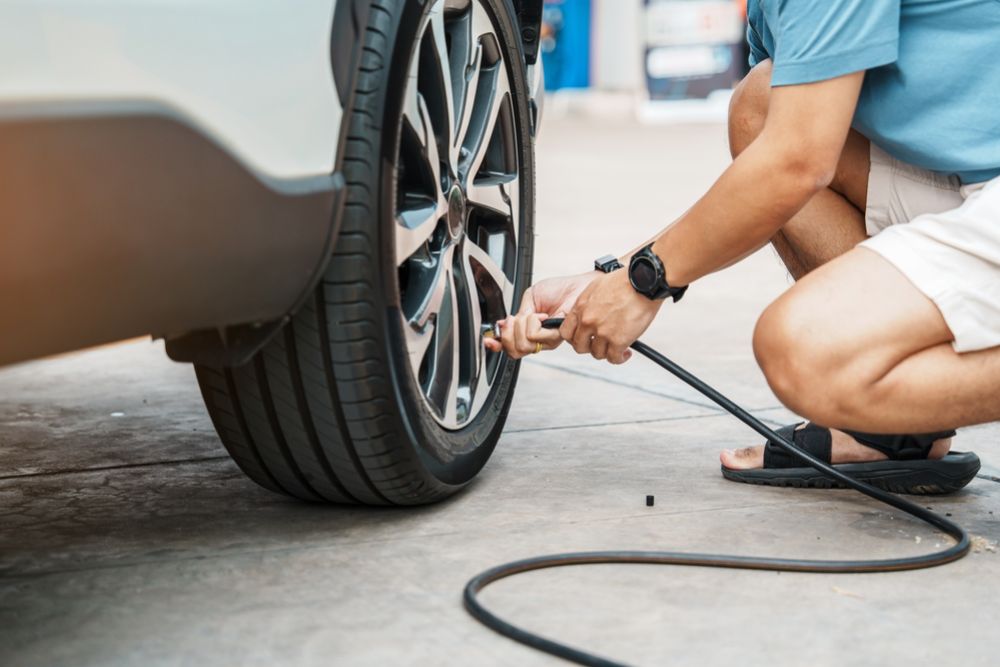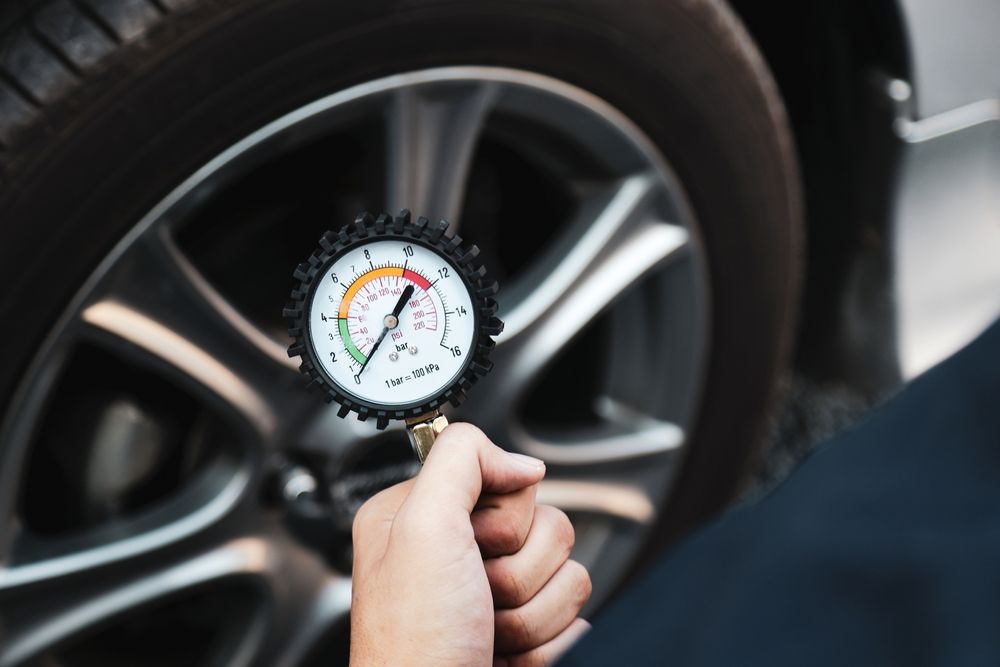When it comes to maximizing your vehicle’s fuel efficiency, many drivers often focus on the obvious factors—driving habits, the weight of the car, and the engine's condition. However, one often overlooked yet critical component that can make a substantial difference is tire pressure. While tire pressure may seem like a minor detail, it has a significant impact on your car's fuel efficiency, safety, and the longevity of your tires.
In this article, we will delve into the importance of choosing the right tire pressure, how it affects your vehicle’s performance, and the simple steps you can take to ensure your tires are properly inflated for maximum fuel efficiency.
Understanding Tire Pressure
Tire pressure refers to the amount of air inside your tires, typically measured in pounds per square inch (PSI). Each tire on your vehicle is designed to operate at a specific PSI level, which ensures that the tires have enough air to carry the weight of the car, provide a stable grip on the road, and deliver optimal performance.
When tires are underinflated or overinflated, they do not perform optimally, which can lead to various problems, including poor fuel efficiency, increased tire wear, and compromised safety.
The Link Between Tire Pressure and Fuel Efficiency
Fuel efficiency is influenced by the amount of rolling resistance your tires create as they contact the road. Rolling resistance is the force that opposes a tire's motion as it rolls. Underinflated tires create more rolling resistance because they have a larger contact area with the road, which leads to increased friction. This results in more energy (and therefore more fuel) being required to move the vehicle.
On the other hand, overinflated tires reduce the tire's contact area with the road, making them less stable and more prone to a harsh ride. Though overinflated tires may seem to reduce rolling resistance, they can also compromise traction and cause uneven wear, which can be detrimental in the long run.
To achieve optimal fuel efficiency, it is crucial to maintain the right balance of tire pressure—not too high and not too low.
How Low Tire Pressure Affects Fuel Efficiency
Low tire pressure increases rolling resistance, which forces the engine to work harder. When the engine works harder, it burns more fuel to maintain the same speed. In fact, studies have shown that underinflated tires can reduce fuel efficiency by up to 3%. The more underinflated your tires are, the more energy your car requires to move, which translates into a direct loss in fuel economy.
Additionally, low tire pressure can cause tires to wear unevenly. This leads to the need for more frequent tire replacements, increasing maintenance costs over time.
The Benefits of Properly Inflated Tires
Maintaining the correct tire pressure is key to improving fuel efficiency. When your tires are properly inflated, they have optimal contact with the road, which minimizes rolling resistance and ensures that the car moves smoothly. This helps the engine perform more efficiently, using less fuel to power the vehicle.
Proper tire inflation also results in better handling, which can improve driving comfort and reduce the likelihood of accidents. Tires that are inflated according to the manufacturer’s specifications will provide optimal grip and traction, contributing to a safer driving experience.
Moreover, properly inflated tires last longer. They wear more evenly, which can extend their lifespan and save you money on tire replacements.
How to Find the Right Tire Pressure
Each vehicle has a recommended tire pressure that is set by the manufacturer, and it is important to follow these guidelines for optimal performance. The recommended tire pressure can typically be found in the following places:
- Owner’s Manual: The owner’s manual for your vehicle will provide the manufacturer’s recommended tire pressure.
- Tire Information Label: Most vehicles have a label on the driver’s side door frame (usually on the edge of the door or the doorjamb) that lists the recommended PSI for both front and rear tires.
- Tire Sidewall: The tire itself will have a maximum PSI rating marked on the sidewall. However, it’s essential to note that this is the maximum pressure the tire can handle, not the optimal pressure for fuel efficiency or vehicle safety.
The ideal tire pressure for your car is typically between 30 and 35 PSI, though it varies based on the make and model of the vehicle. Always follow the manufacturer’s recommended tire pressure, as inflating tires to the correct level is critical for maintaining optimal fuel efficiency and performance.

How to Check Tire Pressure
Checking your tire pressure is an easy process that can be done at home with a few simple tools. Here’s a step-by-step guide:
- Use a Tire Pressure Gauge: You can purchase an affordable tire pressure gauge at most auto parts stores or online. Digital or analog gauges are available, and both provide accurate readings.
- Check Tires When Cold: Tire pressure should be checked when the tires are cold, as driving heats up the air inside the tire and can give a false reading. Ideally, check your tire pressure in the morning before you drive.
- Remove the Valve Cap: Remove the valve cap from the tire’s valve stem and attach the pressure gauge to the valve stem. The gauge will give you a reading of the tire’s current pressure.
- Adjust Pressure as Needed: If the pressure is too low, add air until you reach the recommended PSI. If the pressure is too high, release air by pressing the small metal valve inside the valve stem until the gauge reads the correct pressure.
- Repeat for All Tires: Check all four tires to ensure they are properly inflated. Don’t forget to check the spare tire as well, especially if you have a full-size spare.
How Often Should You Check Tire Pressure?
It is recommended to check your tire pressure at least once a month and before long road trips. Tire pressure can naturally decrease over time, and weather changes can also affect the pressure. For example, tire pressure tends to drop in colder temperatures and rise in hotter weather, so adjustments may be necessary with the changing seasons.
If you notice that your tire pressure is consistently low, even after inflating your tires to the correct PSI, it could indicate a slow leak or an issue with the valve stem. In this case, it’s important to take your vehicle to a mechanic or tire shop for further inspection.
The Role of Tire Maintenance in Fuel Efficiency
While maintaining the proper tire pressure is the most significant factor in improving fuel efficiency, there are other aspects of tire maintenance that can contribute to better performance and longer-lasting tires:
- Regularly Rotate Your Tires: Rotating your tires ensures that they wear evenly, which helps improve fuel efficiency and prolongs the life of your tires.
- Check for Tire Damage: Regularly inspect your tires for signs of damage, such as cuts, punctures, or bulges. Damaged tires can cause poor handling and reduce fuel efficiency.
- Ensure Proper Wheel Alignment: Misaligned wheels can cause your tires to wear unevenly, increasing rolling resistance and decreasing fuel efficiency. If you notice that your car pulls to one side or that the steering wheel is off-center, have the alignment checked.
- Choose Low Rolling Resistance Tires: Some tires are specifically designed to reduce rolling resistance and improve fuel economy. These tires may have a slightly higher initial cost but can offer long-term savings in fuel efficiency.
Tire pressure plays a critical role in the overall performance of your vehicle, including fuel efficiency. Properly inflated tires reduce rolling resistance, increase fuel economy, and enhance safety and handling. By regularly checking and maintaining your tire pressure, you can ensure that your vehicle operates at its optimal efficiency, saving you money on fuel and reducing your carbon footprint.
While tire pressure is just one aspect of vehicle maintenance, it is a simple and cost-effective way to improve your car's fuel efficiency. So, next time you hit the road, make sure your tires are properly inflated and enjoy the benefits of a smoother, more fuel-efficient ride.

